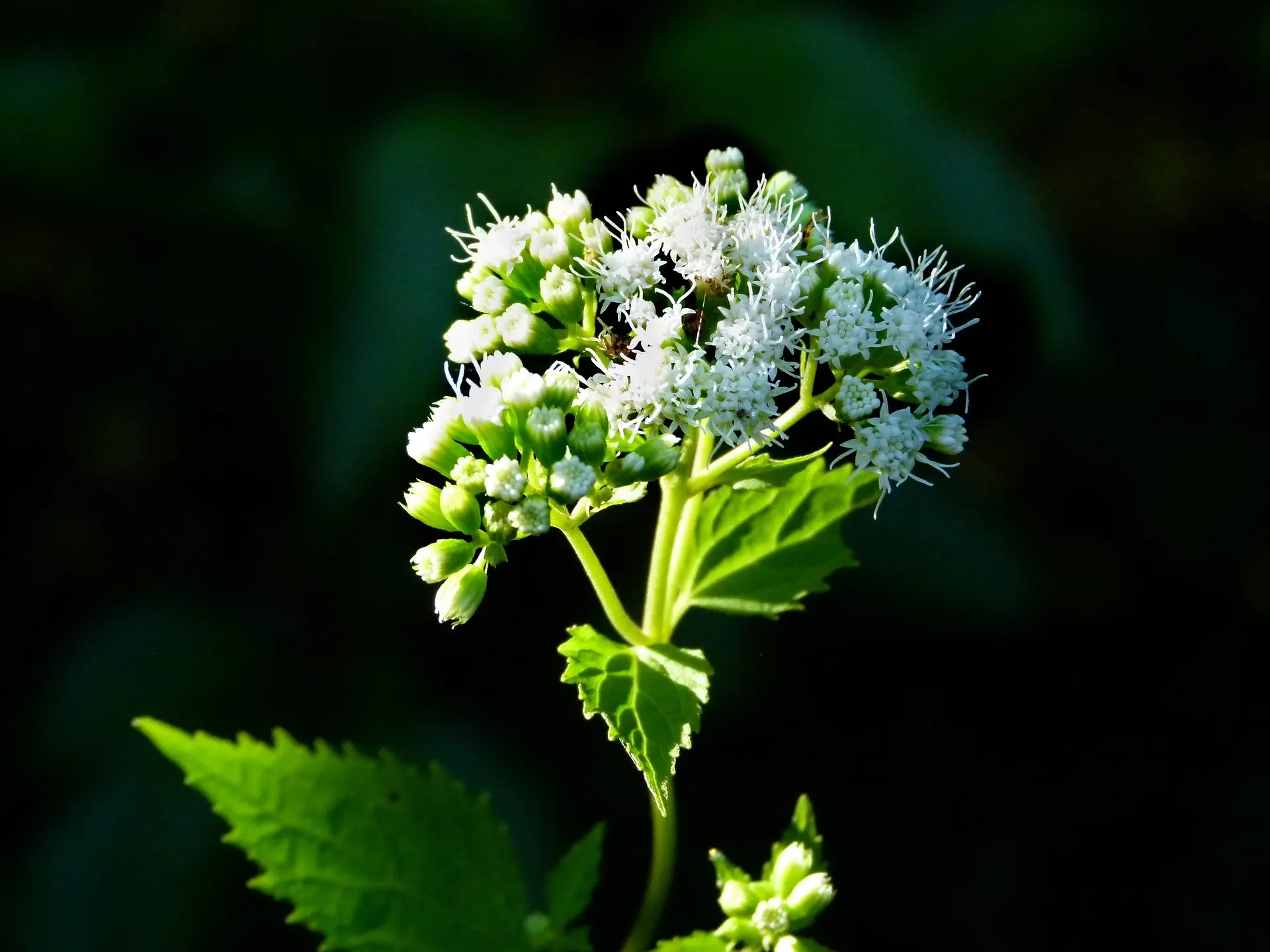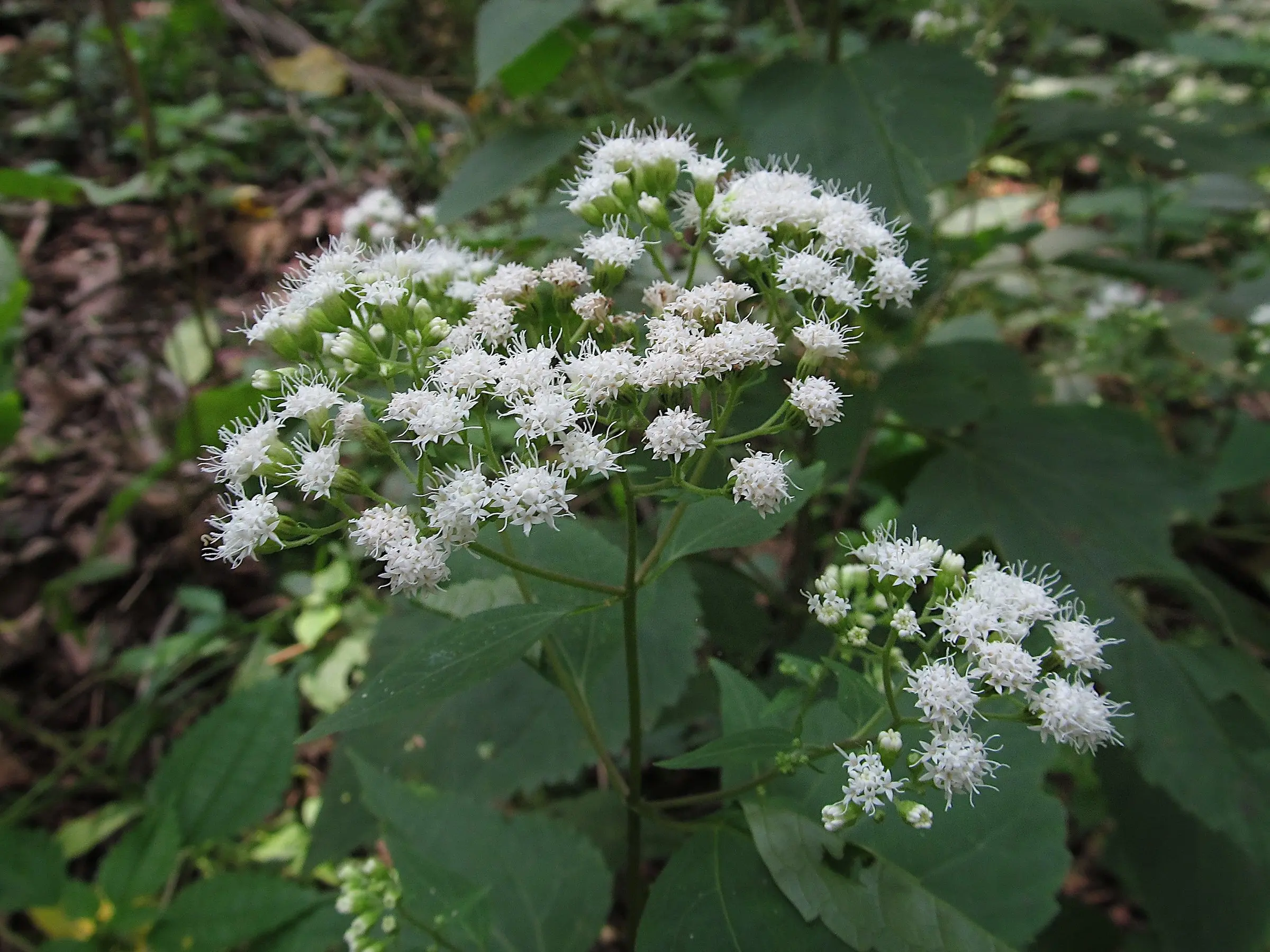
Welcome to yet another weekly edition of the a-z of plants that are dangerous to your horse. Today’s plant is another one with a serpentine name & that’s sure to indicate it’s not good for grazing. White Snakeroot is commonly found & fairly easy to recognize, which is good because it’s bite is deadly.
A Little About White Snakeroot
Ageratina altissima is also called White Sanicle, Richweed, Tail Boneset & White Snakeroot. This is a perennial with smooth stems. Leaves grow opposite & are egg-shaped with teeth. Flowers are small, white & grow in loose clusters.
How Dangerous Is It?
This plant is common, highly toxic & not one to take chances with. White Snakeroot contains Trematol, a toxin which can be passed on through the milk of nursing mares.
The leaves, stems & flowers of this plant are toxic & can be fatal to equines.

What To Look For
You know your animal the best, so you should know when something is amiss. White Snakeroot toxicity symptoms occur between a few minutes & a few weeks of ingestion & include loss of coordination, weakness, tremors, rapid pulse, jaundice, cardiac arrhythmia’s, profuse sweating, inability to swallow & troubled breathing.
Learn More
Be sure to check out the White Snakeroot page to learn more about the plant & while you are at it why not check out more toxic plants?
*It should be noted that we’re not veterinarians. This information is written specifically for horses & should be used for reference purposes only. If you think your horse has eaten something toxic call your vet right away.
Ageratina altissima (Fall Poison, White Snakeroot) and Tall Boneset (Eupatorium altissimum) are two different plants. White snakeroot is a 3-foot-tall perennial herb that is similar in appearance to Tall Boneset, but Tall Boneset can grow up to 6 foot tall. Additionally, according to the Ohio State Perennial & Biennial Wee Guide:
“White snakeroot can be separated from other … species such as bonesets, Joe-Pye weeds, other snakeroots, and thoroughworts by its distinctive leaves that are opposite, sharply-toothed, 3-nerved, and attached to long petioles.”